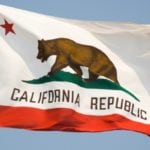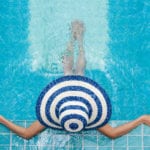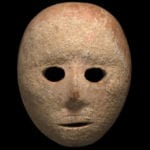 Music
Music  Music
Music  History
History 10 Less Than Jolly Events That Occurred on December 25
 Weird Stuff
Weird Stuff 10 Funny Ways That Researchers Overthink Christmas
 Politics
Politics 10 Political Scandals That Sent Crowds Into the Streets
 Weird Stuff
Weird Stuff Ten Bizarre Facts About The Doge Meme
 Our World
Our World 10 Ways Your Christmas Tree Is More Lit Than You Think
 Movies and TV
Movies and TV The 10 Coolest Stars to Set Sail on The Love Boat
 History
History 10 Things You Didn’t Know About the American National Anthem
 Technology
Technology Top 10 Everyday Tech Buzzwords That Hide a Darker Past
 Humans
Humans 10 Everyday Human Behaviors That Are Actually Survival Instincts
 Music
Music 10 Surprising Origin Stories of Your Favorite Holiday Songs
 History
History 10 Less Than Jolly Events That Occurred on December 25
 Weird Stuff
Weird Stuff 10 Funny Ways That Researchers Overthink Christmas
Who's Behind Listverse?

Jamie Frater
Head Editor
Jamie founded Listverse due to an insatiable desire to share fascinating, obscure, and bizarre facts. He has been a guest speaker on numerous national radio and television stations and is a five time published author.
More About Us Politics
Politics 10 Political Scandals That Sent Crowds Into the Streets
 Weird Stuff
Weird Stuff Ten Bizarre Facts About The Doge Meme
 Our World
Our World 10 Ways Your Christmas Tree Is More Lit Than You Think
 Movies and TV
Movies and TV The 10 Coolest Stars to Set Sail on The Love Boat
 History
History 10 Things You Didn’t Know About the American National Anthem
 Technology
Technology Top 10 Everyday Tech Buzzwords That Hide a Darker Past
 Humans
Humans 10 Everyday Human Behaviors That Are Actually Survival Instincts
10 Bizarre Secrets Behind America’s National Treasures
Growing up in the United States, you learn about all the big, quintessentially “American” sites and structures from a very early age. You’re told that they are important and given a vague explanation of why. Then you set about the task of never really thinking about them again.
That’s a shame because they can be quite fascinating—usually for reasons that they were never meant to be. Behind the stately columns and torches lies an entire world of weirdness hidden away from the public eye.
10 The Washington Mini Monument
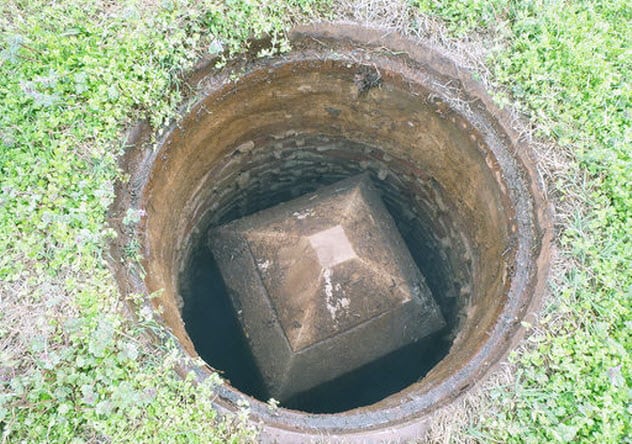
The Washington Monument, the giant white obelisk in Washington, DC, was built in honor of the first US president, George Washington. You probably knew that. What you may not have known is that the monument has a forgotten baby brother.
Buried beneath an unassuming manhole right beside the famous landmark is a 3.7-meter-tall (12 ft) replica. Placed there in the 1880s, around the same time that the Washington Monument was finished, this shrunken clone served as a “Geodetic Control Point” for the National Geodetic Survey (NGS).[1]
Officially named “Bench Mark A,” it was basically used as an exceptionally accurate starting point when making maps and planning railroad routes. However, due to its proximity to the monument, the NGS employees decided to dress it up a bit rather than use the standard plain metal rods.
Unfortunately, the miniature monument has sunk into DC’s marshy soil over the years. So it was given a proper burial. It was entombed in a brick chimney and sealed off from the world. It continues to sink about 0.5 millimeters (0.02 in) each year.
9 The Capitol’s Flag Factory
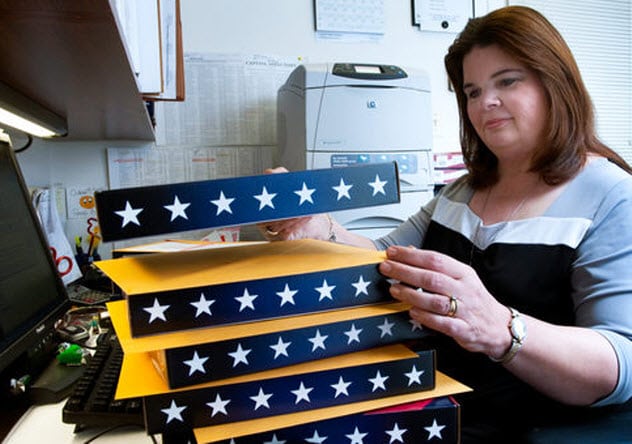
Aside from being your typical stately government building, the Capitol Building in Washington, DC, offers a special service: For a small fee, you can own an American flag that has been flown over the Capitol. So, if you wish to own a flag that is slightly more America-y than your neighbor’s, you’re welcome.
But before you reach for your wallet, there’s just one thing. The flag you receive will indeed have been flown over the Capitol, but only on one of three tiny, hidden flagpoles for 30 seconds.
Since its inception in 1937, the Capitol Flag Program (CFP) has supplied patriotic citizens with genuine “Capitol-flown” flags. However, when demand eventually outgrew supply, the CFP had to get creative. Rather than continue to sell the prominently displayed flags above the Capitol’s entrances, they just installed a bizarre “flag factory” on the roof.
Three unremarkable flagpoles, complete with a small service elevator and crew of workers, are used to fly as many flags for the state-mandated 30 seconds as possible each day. Security cameras have even been installed to prevent workers from flying the flags for a disgustingly disrespectful 29 seconds.[2]
8 The Golden Gate Bridge-Boat-Tunnel Thing
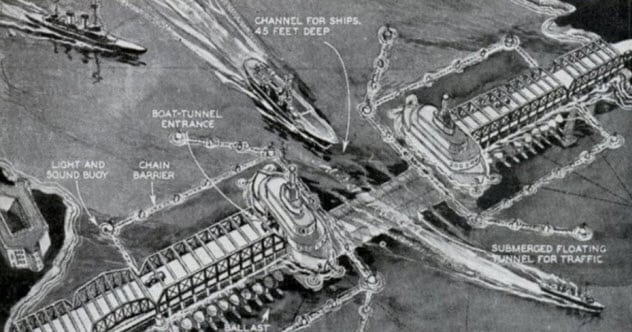
While it isn’t a really a national monument, San Francisco’s Golden Gate Bridge is still a world-famous symbol of American ingenuity. However, this bright orange engineering marvel came dangerously close to not existing. San Francisco almost built a tunnel instead. Stranger still, they almost built a tunnel designed by a man who had presumably no idea what a tunnel actually was.
When shopping around for ideas about how to span San Francisco Bay in the early 1930s, city officials were delivered an unusual proposal by local inventor Cleve F. Shaffer. His eccentric concept called for two bridges to be built—one from each shore—which would each connect to its own ship floating stationary in the bay. A tunnel would run between the ships, which would be raised and lowered to allow sea traffic in and out of the city.[3]
Aside from the fever-dream design, the problems introduced by the plan were many. The narrow spiral ramps within the bridge-ships would create nightmarish traffic jams. In addition, the fact that most of the bridge was freely floating was a recipe for maritime disaster.
Tempted by the relatively low price tag, the city of San Francisco came bafflingly close to accepting this design before settling on their now world-famous suspension bridge.
7 The Supreme Basketball Court
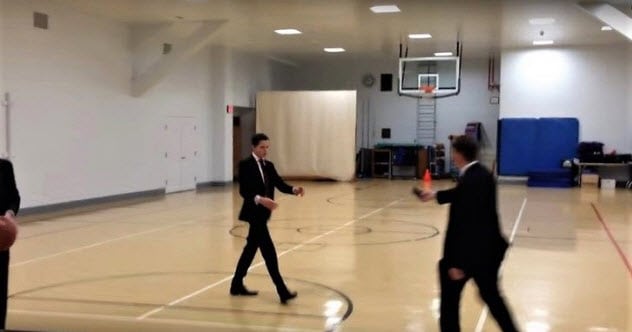
The “Highest Court of the Land” is a title that has long been held by the US Supreme Court. It is well-deserved, albeit in a metaphorical sense. A more literal example would be the secret basketball court which sits just above the courtroom.
Once used as a storage area for journals and other legal documents, the fifth floor of the Washington, DC, Supreme Court building was converted into an all-purpose workout area for off-duty employees in the 1940s. At some point, the focus shifted to basketball and a slightly smaller-than-regulation basketball court was constructed.
In recent years, justices such as Byron White and William H. Rehnquist have shot hoops there to blow off steam. Sandra Day O’Connor used it to host women-only yoga classes. A weight-lifting area even caters to justices looking to strengthen their cores.[4]
Unfortunately, this court is off-limits to the public. As it sits just above the courtroom on the fourth floor, there are strict rules in place. Signs warn visitors not to play when court is in session because squeaky sneakers can really blow your concentration when deciding the legal fate of millions.
6 The Disturbing Vision Behind the National Parks
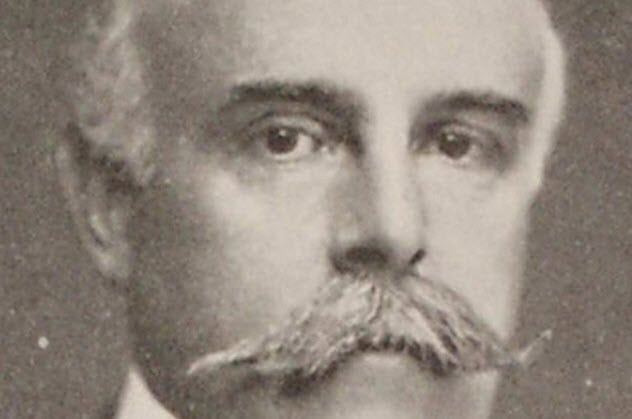
Many people are aware that Theodore Roosevelt founded the US Forest Service and more or less created the concept of a “national park.” However, most people don’t know that he had help—from some of the most distressingly racist people on the planet. They saw national parks as an opportunity to prove the importance of racial purification.
These men were Madison Grant, Gifford Pinchot, and a handful of other aristocratic supporters of eugenics, the belief that some creatures—including humans—are genetically superior to others. They were fond of warning of the impending “race suicide” that America would face if it didn’t replenish its stock of white people and even suggested that certain people should be legally forbidden to reproduce.[5]
However, they were also very vocal about the importance of wildlife conservation. When Roosevelt approached them for help in establishing the national parks, they saw an opportunity to kill two birds with one stone.
Essentially, their idea was to use the parks as a metaphor for human society—the noble bear and elk (white people) deprived of land and resources by weaker but more numerous species (nonwhites). Luckily, the message was lost in translation and now we just like looking at all the pretty trees.
5 Crazy Horse’s Ironic Insult

In 1948, sculptor Korczazk Ziolkowski began work on possibly the most ambitious statue in the world. Using the very mountains of South Dakota’s Black Hills, he planned to honor Native American folk hero Crazy Horse with a massive memorial, the largest on the planet. Unfortunately, he didn’t bother to consult any actual Native Americans before starting work.
Aside from the fact that Ziolkowski began unknowingly blowing apart a sacred mountain with no permission whatsoever, the statue itself has proven problematic as well. The plan calls for Crazy Horse, mounted on horseback, to be pointing dramatically across the land.
This is a reference to a folktale in which a white man asks, “Where are your lands now?” The legendary warrior replies, “My lands are where my dead lie buried.” It makes for a moving image. But there’s one small problem: It is unbelievably rude to point in Native American culture.[6]
Needless to say, Native American spokesmen have been condemning the statue for decades, comparing it to a Mount Rushmore that features the presidents picking their noses. Luckily, the statue is not yet finished. Here’s hoping that someone takes over soon who is willing to actually speak to the people being honored.
4 The National Mall’s Dodged Bullet
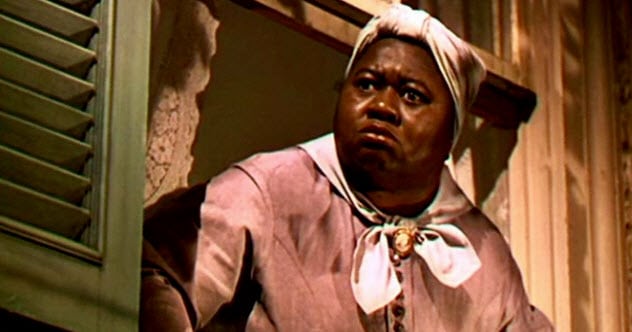
The National Mall in Washington, DC, is absolutely packed with monuments to great Americans and moments in American history. The Washington Monument, the Smithsonian, and the Lincoln Memorial all call this long, grassy stretch home. However, in the early 1920s, it came dangerously close to adopting a new monument, seemingly praising one of the darkest moments in the nation’s history.
Having only been abolished half a century prior, slavery was still an extremely tender topic during the early years of the 20th century. This is exactly why the “Mammy Monument” was so baffling.
Proposed by North Carolina Congressman Charles Stedman in 1923, this statue featured a large slave woman holding a white infant. It was to be a memorial to slaves who “desired no change in their condition of life.”[7]
Understandably, in an era in which many white Americans were still struggling to decide if freeing the slaves had been the right move, a monument to slaves that looked upon slavery “as the happy golden hours of their lives” might have been problematic.
Nevertheless, the Senate approved the proposal, nearly constructing the statue ironically close to the Lincoln Memorial. However, overwhelming backlash ultimately caused the project to be canceled.
3 Lincoln’s Cave Drawings

Speaking of the Lincoln Memorial, it isn’t immune to Hidden Historical Weirdness Syndrome (HHWS), either. Like other HHWS sufferers, Lincoln’s famous shrine hides its secrets well. Only a select few ever get to see it, but there is a man-made cavern full of modern cave paintings hiding just beneath Abe’s massive throne.
During the monument’s construction in the naturally swampy Washington, DC, terrain, workers had to dig down 12 meters (40 ft) to hit anything solid enough to build on. Then they poured several concrete pillars to support the weight of the memorial. This inadvertently created a huge artificial cave system beneath the structure. In the years following its 1922 completion, it even began growing stalactites.
But the truly bizarre bits are the cave drawings—charcoal graffiti left by bored workmen over 100 years ago. Perfectly preserved in their sealed tomb, intricate illustrations of dogs, horses, flapper girls, and men smoking pipes stare from the giant columns supporting Honest Abe.
Plastic sheets have been placed to protect a few of these drawings, but most are still exactly as they were left a century ago. Tentative plans are in place to open this otherworldly time capsule to the public in the near future.[8]
2 The Roosevelt Geyser
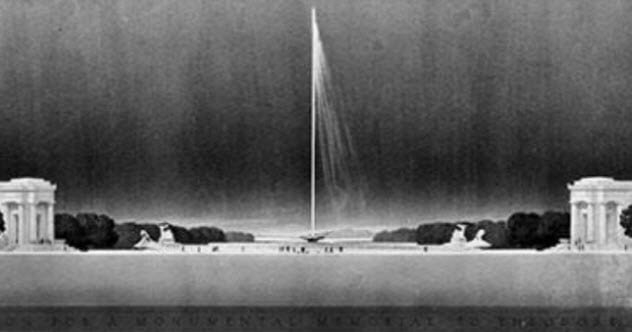
Today, the Theodore Roosevelt Memorial sits on a quiet island in the Potomac River in Washington, DC. In honor of the 26th president’s love of nature and conservation, it largely consists of a simple park. However, upon Roosevelt’s death in 1919, proposals for a memorial began pouring in, and the current design was nowhere near the most likely.
At first, officials were drawn to a plan put forth by architect John Russell Pope. On the southern banks of DC’s tidal basin—home of the Jefferson Memorial—a fountain would be constructed in honor of Roosevelt’s spirit, which “sprang out of the deep sources of the nation’s history.” However, this would be no ordinary fountain. Larger than life, like Roosevelt himself, this fountain would blast water to a staggering 61 meters (200 ft), twice as tall as the Lincoln Memorial.[9]
Obviously, the man-made geyser idea never saw the light of day. Not only did many agree that it was too soon to build a memorial to the only one-year-deceased president, but the irony wasn’t lost on the public. After all, was such a monumental waste of water really the best way to honor the greatest conservationist in history?
1 Lady Liberty’s Makeover

New York City’s Statue of Liberty is far and away the most powerful symbol of the United States. Instantly recognizable the world over, this (now) green behemoth has welcomed ships to NYC since 1886. But bizarrely, her iconic look was not her first one—she was originally a Muslim woman.
Frederic-Auguste Bartholdi, the statue’s designer, had first planned to build the colossal statue/lighthouse for the opening of Egypt’s Suez Canal. She was to be a fellah (“Arab peasant”) clad in a simple Middle Eastern robe.
Entitled Egypt Carrying the Light to Asia, she would represent the Egyptians, her torch lighting the way for the rest of the world. However, after throwing obscene amounts of cash at the canal project itself, the Egyptian government passed on the costly—and entirely cosmetic—statue.
But Bartholdi was determined to bring his vision to life. So when the French government approached him to design a monument for the US for its centennial celebration, he jumped at the chance. After swapping her Muslim robe for a more Roman number and changing her official name to Liberty Enlightening the World, Bartholdi presented the United States with his now world-famous creation.[10]
Read more fascinating stories about national treasures on 10 Facts That Prove Mount Rushmore Was A Terrible Idea and 10 Amazing Lost Treasures No One Can Find.
